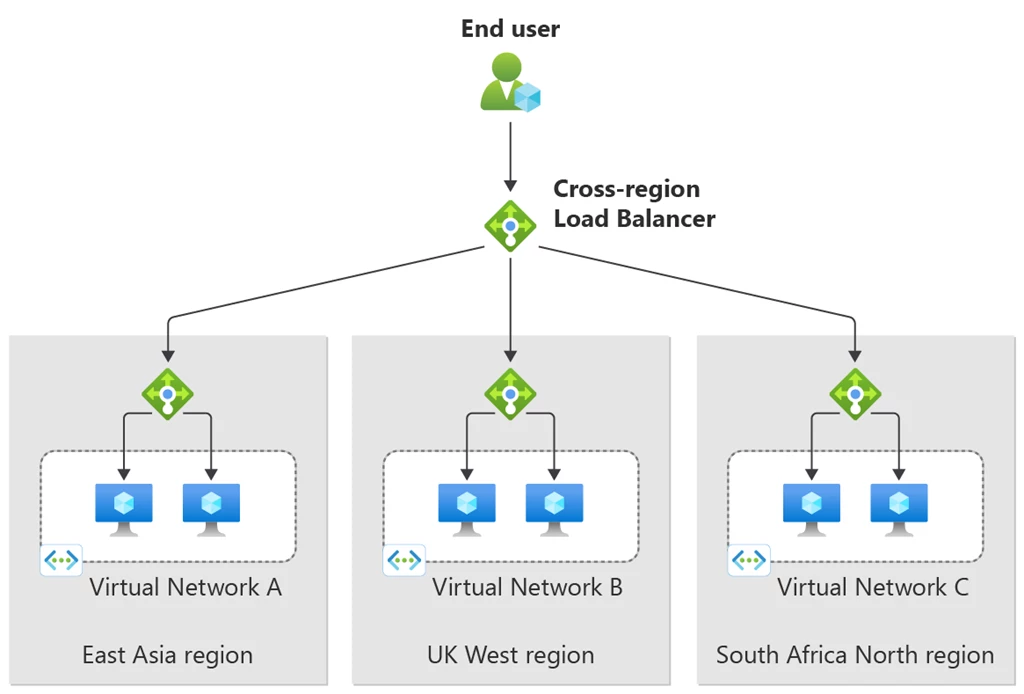Azure Load Balancer’s global tier is a cloud-native global network load balancing solution. With cross-region Load Balancer, customers can distribute traffic across multiple Azure regions with ultra-low latency and high performance. To better understand the use case of Azure’s cross-region Load Balancer, let’s dive deeper into a customer scenario. In this blog, we’ll learn about a customer, their use case, and how Azure Load Balancer came to the rescue.
Who can benefit from Azure Load Balancer?
This example customer is a software vendor in the automotive industry. Their current product offerings are cloud–based software, focused on helping vehicle dealerships manage all aspects of their business including sales leads, vehicles, and customer accounts. While it is a global company, most of its business is done in Europe, the United Kingdom (UK), and Asia Pacific regions. To support its global business, the customer utilizes a wide range of Azure services including virtual machines (VMs), a variety of platform as a service (PaaS) solutions, Load Balancer, and MySQL to help meet an ever-growing demand.
What are the current global load balancing solutions?
The customer is using domain name service (DNS)–based traffic distribution to direct traffic to multiple Azure regions. At each Azure region, they deploy regional Azure Load Balancers to distribute traffic across a set of virtual machines. However, if a region went down, they experienced downtime due to DNS caching. Although minimal, this was not a risk they could continue to take on as their business expanded globally.
What are the problems with the current solutions?
Since the customer’s solution is global, as traffic increased, they noticed high latency when requesting information from their endpoints across regions. For example, users located in Africa noticed high latency when they tried to request information. Often their requests were routed to an Azure region on another continent, which caused the high latency. Answering requests with low latency is a critical business requirement to ensure business continuity. As a result, they needed a solution that withstood regional failover, while simultaneously providing ultra-low latency with high performance.
How did Azure’s cross-region Load Balancer help?
Given that low latency is a requirement for the customer, a global layer 4 load balancer was a perfect solution to the problem. The customer deployed Azure’s cross-region Load Balancer, giving them a single unique globally anycast IP to load balance across their regional offices. With Azure’s cross-region Load Balancer, traffic is distributed to the closest region, ensuring low latency when using the service. For example, if a customer connected from Asia Pacific regions, traffic is automatically routed to the closest region, in this case Southeast Asia. The customer was able to add all their regional load balancers to the backend of the cross-region Load Balancer and thus improved latency without any additional downtime. Before the update was deployed across all regions, the customer verified that their metrics for data path availability and health probe status are 100 percent on both its cross-region Load Balancer and each regional Load Balancer.

After deploying cross-region Load Balancer, traffic is now distributed with ultra-low latency across regions. Since the cross-region Load Balancer is a network load balancer, only the TCP/UDP headers are quickly inspected instead of the entire packet. In addition, the cross-region Load Balancer will send traffic to the closest participating Azure region to a client. These benefits are seen by the customer who now sees traffic being served with lower latency than before.
Learn More
Visit the Cross-region load balancer overview to learn more about Azure’s cross-region Load Balancer and how it can fit into your architecture.
